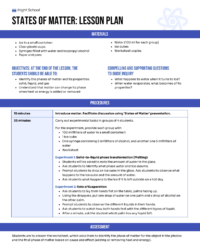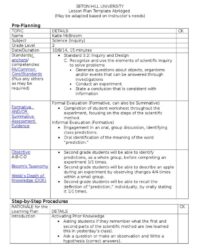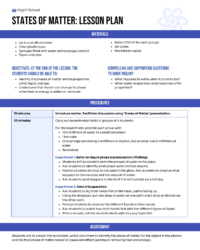Ever felt like planning a truly engaging lesson takes forever? As educators, we constantly strive to create dynamic learning experiences that stick with our students, moving beyond just rote memorization to genuine understanding. The learning cycle approach offers a fantastic framework for achieving this, guiding learners through a natural progression of inquiry and discovery. It is about creating a journey where students actively construct their knowledge, rather than passively receiving information.
But how do you translate this powerful pedagogical theory into a practical, day-to-day lesson? That is where a well-designed learning cycle lesson plan template becomes an invaluable asset. It transforms the abstract concept of inquiry-based learning into a tangible guide, helping you structure your lessons efficiently and ensure every phase of the learning cycle is thoughtfully addressed. Let us dive into how you can harness this tool to revolutionize your teaching.
Deconstructing the Powerful Learning Cycle Model
The learning cycle model, often exemplified by the 5E or 7E instructional models, is a sequence of activities designed to help students build a deep understanding of a concept through active engagement and exploration. It moves away from the traditional lecture-heavy format, putting the student at the center of the learning process. Each phase builds upon the last, ensuring that students are prepared for new information and can connect it to their existing knowledge.
Implementing this model effectively requires a clear understanding of what each stage entails and what teacher and student roles are within them. A systematic approach to planning is crucial to ensure a seamless flow from one phase to the next, maximizing student engagement and retention. Let us explore the common phases you will encounter in a robust learning cycle.
Engage
This is where you hook your students! The Engage phase aims to capture student interest, prompt curiosity, and uncover prior knowledge (or misconceptions) about the topic. Activities here might include asking a compelling question, showing a puzzling image or video, conducting a quick demonstration, or even sharing a relevant personal anecdote. The goal is to make students eager to learn more.
Explore
In the Explore phase, students actively investigate the concept. This is where they get hands-on, working with materials, conducting experiments, observing phenomena, or analyzing data. The teacher acts as a facilitator, providing resources and guiding questions but allowing students to discover relationships and patterns for themselves. It is a period of genuine inquiry and data collection.
Explain
Following exploration, the Explain phase provides an opportunity for students to articulate their understandings and for the teacher to introduce formal concepts, definitions, and theories. Students share their observations and initial interpretations, and the teacher clarifies misconceptions, provides direct instruction, and helps students connect their experiences from the Explore phase to scientific or academic explanations. This phase brings structure to their discoveries.
Elaborate
The Elaborate phase is all about applying and extending newly acquired knowledge to new situations or solving new problems. Students might engage in further investigations, design solutions, create presentations, or discuss real-world applications of the concept. This phase deepens understanding and encourages critical thinking, showing students the broader relevance of what they have learned.
Evaluate
Finally, the Evaluate phase serves as an opportunity for both students and teachers to assess understanding. This can involve formal assessments like quizzes or projects, but also informal checks like observations, questioning, or peer assessments. The goal is to determine if students have achieved the learning objectives and to reflect on the effectiveness of the instructional approach.
Designing Your Own Powerful Learning Cycle Lesson Plan Template
Creating a specific learning cycle lesson plan template tailored to your needs can significantly streamline your planning process. It ensures consistency across your lessons, helps you hit all the key phases, and provides a clear roadmap for both you and your students. Think of it as your personal blueprint for crafting highly effective and engaging learning experiences every time.
A well-structured template not only saves you time in the long run but also acts as a checklist, reminding you to incorporate essential elements that make the learning cycle so effective. It prompts you to think critically about how each activity contributes to the overall learning goal and how students will transition smoothly from one phase to the next. This foresight can prevent common pitfalls and ensure a more cohesive lesson.
When you are building or selecting your ideal template, consider including the following components to make it truly comprehensive and functional:
- Learning Objectives: What specific knowledge or skills should students gain?
- Materials and Resources: What do you and students need for each phase?
- Time Allocation: How much time will be dedicated to each segment of the lesson?
- Engage Activities: Specific ideas to spark curiosity and connect to prior knowledge.
- Explore Activities: Detailed plans for student-led investigation and data collection.
- Explain Strategies: How will concepts be formalized and clarified (e.g., mini-lesson, class discussion)?
- Elaborate Tasks: Activities for applying and extending learning to new contexts.
- Evaluation Methods: How will student understanding be assessed throughout and at the end?
- Differentiation Strategies: How will you support diverse learners?
Embracing the learning cycle approach, supported by a clear and comprehensive template, can truly transform your classroom. It shifts the focus from simply delivering content to facilitating a rich, investigative journey for your students. This method empowers learners to become active participants in their education, fostering deeper comprehension and critical thinking skills that last long after the lesson is over.
By consistently applying this structured yet flexible framework, you will find your lessons becoming more dynamic, your students more engaged, and their learning outcomes more robust. It is an investment in effective pedagogy that pays dividends in student success and a more vibrant, inquiry-driven learning environment for everyone involved.


